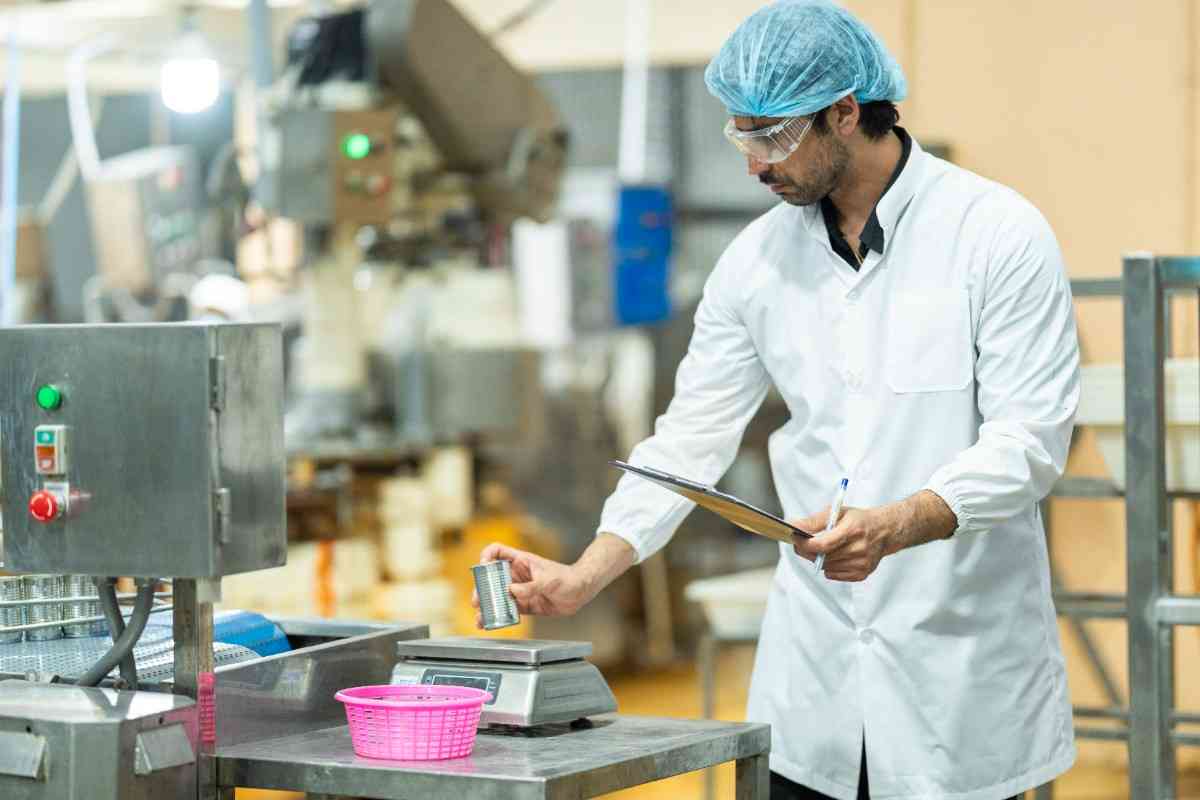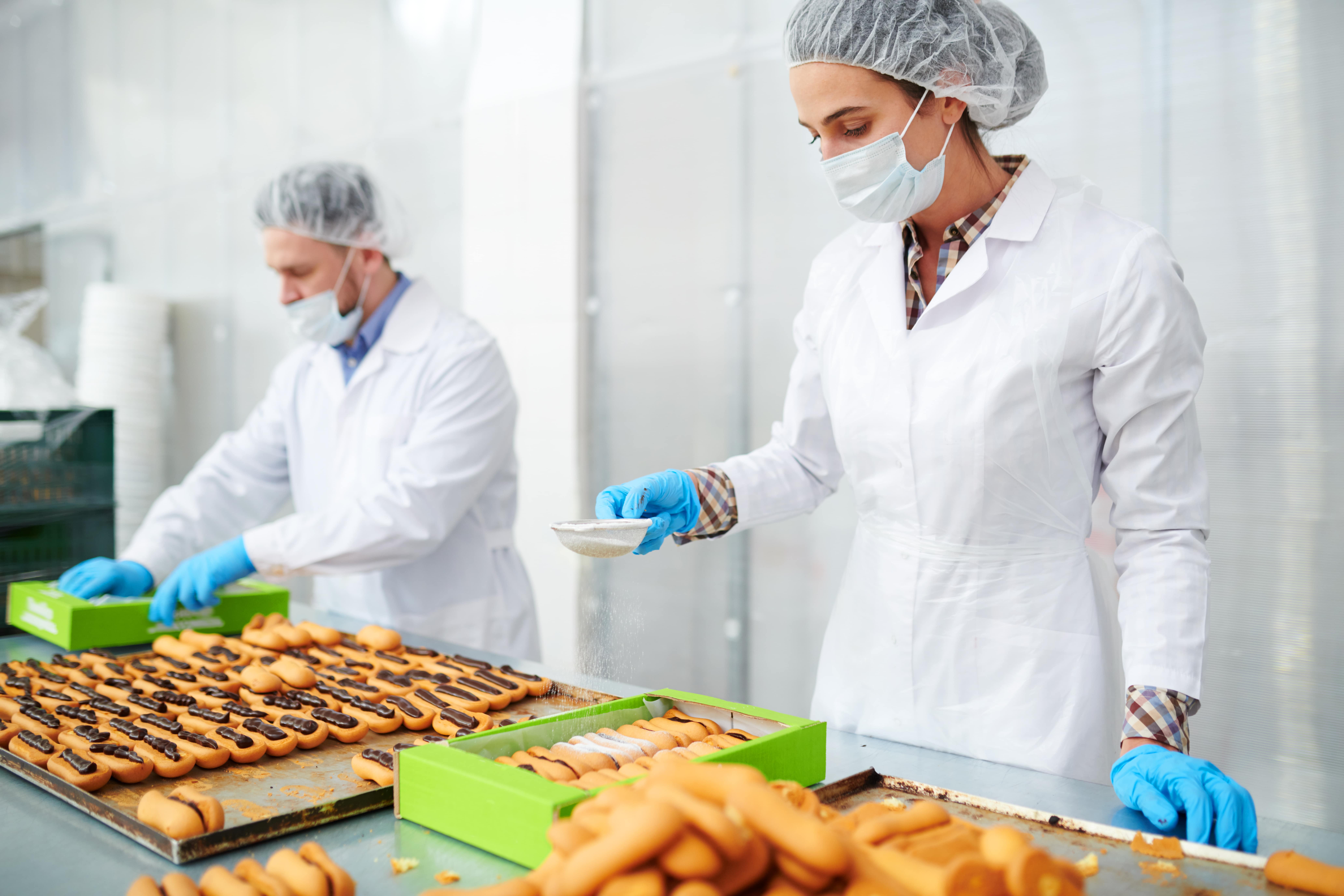Last Updated on November 21, 2025 by Admin
Table of Contents
- What Are Food Safety Standards?
- Why Are Food Safety Regulations Important?
- Safety Standards for Food Safety
- 3.1 Establishing Proper Hygiene Practices
- 3.2 Safe Food Handling Techniques
- 3.3 Maintaining a Clean and Sanitary Environment
- 3.4 Complying Food Safety Standards Across the Supply Chain
- 3.5 Preventing Cross-Contamination
- 3.6 Ensuring Proper Storage and Temperature Control
- 3.7 The Role of Certification
- Food Labelling Regulation
- Food Packaging Standard
- Requirements Of the Food Safety Standards
- Conclusion
- FAQs
Ensuring food safety and quality is paramount for public health and consumer trust. Comprehensive regulations and standards govern the food industry to safeguard these principles. This article provides an overview of the critical aspects of food safety and food quality standards regulations, including labelling, industry safety, packaging standards, and overarching requirements.
What Are Food Safety Standards?
The safety of food in India is managed by “Food Safety and Standards Authority of India (FSSAI)” which comes under the Ministry of Health and Family Welfare. FSSAI came into being with the Food Safety and Standards Act of 2006. The purpose of FSSAI is to integrate various laws concerning food and ensure that the food products in India are safe as per the standards specified with respect to safety as well as hygiene.
FSSAI has set food safety and food quality standards and rules for the entire food supply chain starting from: production, processing and distribution, sales, and even imports. FSSAI also covers regulative areas like food additives and contaminants, packaging, labeling, shelf-life, and hygiene requirements. FSSAI requires each food business operator (FBO) which ranges from small vendors to large vendors to avail of a license or registration depending on the size of the business.
For the purpose of ensuring food safety, India also follows world recognized frameworks such as Good Manufacturing Practices (GMP), Good Hygienic Practices (GHP), HACCP and others. FSSAI promotes food product testing, third-party audits, and also the initiative ‘Eat Right India’ which helps educate consumers and businesses about food.
By issuing regulations, FSSAI seeks to safeguard the health of consumers, minimize food-related illnesses, and promote honest labeling practices. These measures not only bolster the safety of food products in India but also enable Indian food enterprises to comply with international standards and compete in global markets.
Why Are Food Safety Regulations Important?
Regulations related to food safety are critical to public health because they ensure food remains safe, clean, and free of contaminants. These measures prevent foodborne illnesses, enhance consumer trust, and safeguard quality across the entire supply chain. Administratively, these regulations enable the accountability of food producers and handlers, thereby minimizing the probability of outbreak and product recall events. Proper hygiene, storage, and labeling practices enforced by food safety laws foster a healthier nation while promoting equitable trading standards in the global food market.
Safety Standards for Food Safety
Food Industry Safety Standards are critical frameworks designed to uphold the safety and quality of food throughout its production, processing, and distribution phases. These standards encompass practices and procedures to prevent contamination and ensure food is safe for consumption.
-
Establishing Proper Hygiene Practices
The implementation of proper hygiene measures is important when it comes to food safety and preventing contamination. This entails washing hands regularly, cleaning surfaces, using adequate utensils, and observing personal hygiene by the food handlers. Equal attention must be given to waste disposal, pest control, and management of temperature for storage and cooking. These methods mitigate the chances of food illnesses, maintain the standard of the food, and adhere to food safety requirements. Maintaining hygiene standards helps protect the consumers and food businesses which improves public health and confidence in the food supply chain.
-
Safe Food Handling Techniques
To avoid foodborne illnesses and any type of contamination, practicing safe food handling techniques is crucial. These techniques include washing one’s hands before and after handling food, separate cutting boards for raw and cooked food items, and ensuring proper internal temperatures of the food being cooked. Other equally important steps include storing perishables at designated safe temperatures, preventing cross-contamination, as well as using clean surfaces and utensils. Expiry dates should be checked regularly while FIFO (first-in, first-out) practices ensure food freshness. These techniques assist in maintaining food safety from the time of preparation until consumption which protects public health.
-
Maintaining a Clean and Sanitary Environment
Sanitation is one of the most important principles in ensuring food safety and quality. It encompasses cleaning any and all work surfaces, equipment, and utensils used to reduce or eliminate bacterial proliferation and prevention of cross-contamination. Sanitation extends into cleaning of floors and walls as well as the storage space which should be devoid of pests and dirt. Hygiene standards inclusive of proper uniform change and gloving results in further risk minimization. Maintaining cleanliness makes it easier to adhere to food safety and food quality standards and safeguards the well being of the people consuming the food.
-
Complying Food Safety Standards Across the Supply Chain
Compliance with food industry safety standards requires a concerted effort across the supply chain. It includes adopting good agricultural practices, implementing hazard analysis and critical control points (HACCP) systems, and ensuring hygienic handling in retail environments.
-
Preventing Cross-Contamination
Avoiding cross-contamination is extremely important when it comes to the safety of the food and the well-being of the consumers. It includes the separation of cooked and raw foods, proper use of washing hands and different boards and utensils between tasks multiple times, and putting meat at the bottom of the refrigerator with the cooked items above. Regular cleaning of surfaces also helps reduce risks. All these actions prevent the spread of dangerous pathogens and bacterial organisms, maintaining the safety and cleanliness of the ingredients.
-
Ensuring Proper Storage and Temperature Control
It is important to control temperatures and store food products properly to avoid spoilage. Items that are perishable should be stored in the refrigerator at temperatures below 5 degrees Celsius and in the freezer below -18 degrees Celsius. Non-perishable products should be stored in cool, dry areas that are away from sunlight. To manage inventories, labels need to be marked correctly and dates tracked in addition to follow FIFO which stands for First In First Out. Frequent cleaning of storages help in maintaining order and proper sanitization leading to ensuring food safety and compliance with health standards.
-
The Role of Certification
Certification of food safety and standards plays a crucial role in demonstrating compliance. Certifications such as ISO 22000, SQF, and BRC are not just badges of honour; they signify a company’s commitment to maintaining high safety standards and enhancing consumer confidence.
Read Also – Learn All About Food Safety Management : ISO 22000
Food Labelling Regulation
Food Labelling Regulation is pivotal in ensuring consumers are well-informed about their food. It mandates clear, accurate, and comprehensive labelling of food products, covering ingredients, nutritional information, allergen warnings, and expiry dates.
The Importance of Accurate Labels
Food labelling regulation is a critical component of food standards regulations. Accurate labelling helps consumers make informed choices about the food they purchase and consume. By providing transparent and precise information, food producers can ensure compliance with legal requirements and foster consumer trust.
How Do Global Standards Affect Labelling?
Food labelling regulations vary globally, but they share common goals: to inform and protect the consumer. Compliance with these regulations requires manufacturers to stay updated on changes and adapt their labels accordingly. This continuous adaptation meets regulatory demands and addresses consumer health concerns and preferences. Important global labelling standards include the Codex Alimentarius, which the FAO and WHO manage. Additionally, the Global Food Safety Initiative (GFSI) benchmarks various food safety standards, including SQF, BRC, and IFS, that influence labelling requirements to ensure the safety and quality of food products.
Challenges and Solutions
The dynamic nature of food labelling regulations presents challenges, especially for international food businesses. Many companies employ regulatory experts and invest in staff training to overcome this complexity. Technological solutions, such as software that tracks regulatory changes, are also increasingly common.
Food Packaging Standard
The Food Packaging Standard sets the criteria for materials and processes used in food packaging, ensuring that packaging does not compromise food safety or quality. It focuses on the suitability of packaging materials, preventing contamination, and maintaining the integrity of the food product during storage and transportation.
-
Protecting Product Integrity
The food packaging standard is integral to maintaining the safety and integrity of food products. Effective packaging protects against contaminants, extends shelf life, and provides essential information to consumers. Materials used in food packaging must comply with food standards regulations to ensure they are safe and do not negatively affect the food product.
-
What Role Does Innovation Play in Packaging?
In recent years, the focus on sustainability has led to innovations in food packaging. Biodegradable materials and reusable packaging options are becoming more prevalent. However, these innovations must balance environmental benefits with the fundamental requirement of safeguarding food safety and quality.
-
Regulatory Compliance
Compliance with food packaging standards involves rigorous testing and certification processes. Packaging materials must be effective and safe for direct contact with food, and regulations ensure that substances from packaging do not migrate into food in harmful amounts.
Requirements Of the Food Safety Standards
The requirements of the Food Safety Standards encompass a broad spectrum of regulations and guidelines that food businesses must follow to ensure the safety and quality of their products. These standards are designed to protect consumers by minimising risks associated with foodborne illnesses, contamination, and improper handling.
-
Ensuring Public Health
The primary goal of food safety and standards is to protect public health by reducing the risk of foodborne diseases. This is achieved through comprehensive regulations covering every food production and distribution aspect.
-
How Does Continuous Improvement Enhance Safety?
Food industry regulations encourage continuous improvement in safety practices. These regulations ensure that food businesses constantly strive to enhance their safety protocols by mandating regular audits, risk assessments, and corrective actions.
-
Global Harmonisation
As the food supply becomes increasingly global, there is a growing need to harmonise food safety and standards. It involves creating universally accepted standards and practices that ensure safety and quality, regardless of the food’s origin.
Conclusion
Adhering to food safety and standards regulations is not just a regulatory necessity but a commitment to public health and consumer trust. The complexity and breadth of these regulations highlight the importance of comprehensive training from a reputed institution. Such training ensures that professionals in the food industry are well-equipped with the knowledge and skills to effectively implement food industry safety standards, food labelling regulations, and food packaging standards. Investing in high-quality education and training from recognised institutions is crucial for businesses aiming to maintain the highest levels of food safety, meet regulatory requirements, and uphold the integrity of their products in the competitive food market.













